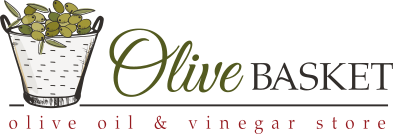Supermarket Olive Oils: What To Know

You've seen fancy bottles of olive oil in the supermarket all your life. Some of the bottles can be really fancy, or conjure up images of Tuscan countrysides and Italian grandmothers assembling incredible delights that make your mouth water. You've probably thought that olive oil is just olive oil and they are all the same, but that is definitely not the case!
Some of the earliest recorded writings in ancient Sumeria were merchants keeping tabs on their trade, one of which happened to be olive oil. As long as there has been trade, there has been fraud, and olive oil is no exception.
In ancient Rome, olive oil was imported to Rome from all over the mediterranean empire, especially from olive growing regions like Greece and Spain. Even way back then, quality was a concern. Researchers have found amphora from the Roman empire with markings on them to record such information about olive oil shipments as:
- who made the amphora (container)
- who filled the amphora
- the weight of the container and the oil in it
- where and when the oil was produced
Even in the 20th century, olive oil fraud has been a problem. It is part of the reason that the "extra virgin" designation was created in the 1960s. Unscrupulous manufacturers have routinely either cut their olive oil with cheaper oils or treated less-quality olive oils with chemicals to remove taste imperfections and passed it along. While the European Union and the US FDA have tried to implement safeguards against fraudulent practices in the olive oil industry, the truth is that those laws are rarely enforced and adulteration can be really difficult to detect, which can lead to fraudulent oils being sold in supermarket shelves even today.
Are all supermarket oils bad? No, of course not. Some of the largest olive oil producers in the world may sell real extra virgin olive oil in branded containers in supermarkets. That said, those oils will never have the flavor of a quality oil bought in a boutique store like The Olive Basket.
The reason is simple: Large olive oil producers aim for consistency. Just like a Big Mac bought today is going to taste exactly like a Big Mac from a year ago in a different state, large olive oil producers want the bottle you buy next month to taste exactly like the one that you bought last month. To achieve this, they acquire oils from multiple sources and blend them until they have the exact flavor profile that they are looking for.
Smaller producers, such as the producers of the oils we sell at The Olive Basket do not do that. When the olives are crushed and the oil is extracted, it undergoes a decanting process and then it is packaged up and sealed for shipping. Nobody touches it until it comes to our store, and we bottle it from there!
Since our oils are not blended to target a specific flavor profile, it is almost impossible for you to get the same flavor with every EVOO that you purchase from us, but we can guarantee that it will be fresh and authentic every time!








 1 -1/2 pounds small, fresh brussels sprouts, dried end trimmed, and cut in half
1 -1/2 pounds small, fresh brussels sprouts, dried end trimmed, and cut in half